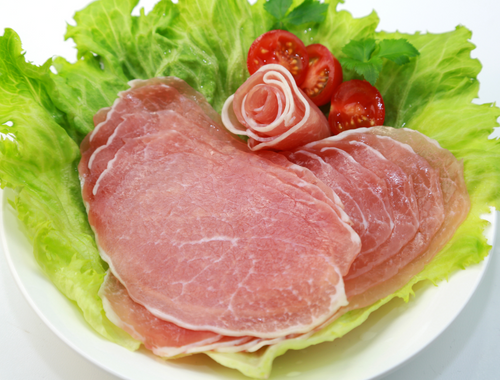Difference Between Cured and Uncured Ham
When it comes to health, uncured meat products have had a bad rep, but unlike other food labels, uncured meat isn’t that tough to understand. There’s no doubt that ham is one of the most popular cold cuts in America. But despite its popularity and high standards in the kitchen, what goes into their production is still a mystery to number of customers. When you look for food labels in grocery stores or supermarkets, hams are commonly labeled as either cured or uncured ham. How does the taste differ? Which one is better for your health? To give you a better idea, we look at some key differences between cured and uncured ham.

Cured Ham
To better understand what exactly uncured ham is, you have to first understand what cured meat is. Curing is a preservation process of various foods such as meat, fish and vegetables. Curing is basically the process of removing moisture from the meat to help preserve them. Salting and smoking meats for preservation is an age-old practice. So, cured ham means the ham is made by injecting a fresh ham with salt and a mixture of chemicals such as nitrates. Such chemical compounds protect the ham from bacterial growth. It is then cooked or smoked, depending on the label. Before smoking, the raw materials are either dry-salted or soaked in brine. The salt helps to preserve the product. Today, salt acts more as a seasoning.

Uncured Ham
Uncured ham is labeled as fresh ham and is the same cut as cured ham. But the main difference between the two is the additives used to preserve the meat. Uncured means the meat has not been cured with chemical additives or preservatives like nitrates. Uncured is any meat that has not undergone the normal curing process and it’s not been brined or flavored. Technically speaking, uncured ham is still much cured, but the only difference is that it is cured far more naturally cured than other meats. They are not injected with a mixture of chemical compounds that are used for curing of meat. Unlike cured, uncured meat uses natural curing agents such as celery powder, celery juice, beet extracts, etc.
Difference between Cured and Uncured Ham
Meaning
– Typically, most meat products are labeled as either cured or uncured. Cured ham means the ham is made by injecting a fresh ham with salt and a mixture of chemicals such as nitrates. Some labels say uncured which should mean that the ham is not cured, but that’s not it. Uncured simply means meat has not been cured with chemical additives or preservatives like nitrates. Curing is simply a process of preservation of food by removing moisture from the food in order to prevent bacterial growth.
Ingredients
– Technically, uncured ham is still much cured, but the only difference is that it is cured far more naturally cured than other meats. The main difference between the two is the ingredients used for curing of meat. Cured ham is typically preserved with sodium nitrate or sodium nitrite. These are synthetic chemical compounds that increase the shelf life of meat. Unlike cured ham, uncured ham uses natural curing agents such as celery powder, celery juice, beet extracts, etc. So, the main difference lies in how the ham is cured or preserved.
Cured Ham vs. Uncured Ham: Comparison Chart

Summary
In a nutshell, uncured ham is still cured but the difference lies in the fact that uncured uses natural curing agents such as celery powder, celery juice, beet extracts, and so on. Such curing agents are obtained from plant based sources, hence uncured ham is considered healthier than cured ham. Cured ham is typically preserved with synthetic compounds such as sodium nitrate or sodium nitrite to protect the ham from bacteria, thereby increasing its shelf life. Because uncured ham is cured using natural curing agents, they have a shorter shelf life.
Which is better cured or uncured ham?
Because of the natural curing process, uncured ham is considered a better and healthier alternative to cured ham. Cured ham, on the other ham, is cured using synthetically sourced nitrates and nitrites. But there is concrete scientific evidence to back this claim.
is healthy because it is cured without adding the synthetically sourced nitrates and nitrites. But there is no scientific evidence to back this claim.
Is uncured ham safe to eat?
Because uncured ham does not contain any added nitrites or unhealthy preservatives, uncured ham is safe to eat. They are already pre-cooked, so you just have to reheat it and you’re good to go.
Which lasts longer cured or uncured ham?
Cured ham is preserved by adding synthetically sourced nitrites or nitrates which ultimately increases its shelf life. Uncured ham is not cured or preserved in the same way as cured ham. They are cured naturally, so the shelf life gets shorter.
Is uncured ham healthy for you?
Uncured ham is cured using natural curing agents such as celery powder, celery juice, beet extracts, and so on. Hence, it is considered healthy and safe to eat, unlike its cured counterpart.
What does it mean if a ham is cured?
Curing simply means the ham is made by injecting a fresh ham with salt and a mixture of chemicals such as nitrates.
Does cured ham mean fully cooked?
If a ham is cured, it is typically considered pre-cooked, meaning you just have to reheat it. In fact, most of the ham found in supermarkets is already smoked or baked.
- Difference Between Caucus and Primary - June 18, 2024
- Difference Between PPO and POS - May 30, 2024
- Difference Between RFID and NFC - May 28, 2024
Search DifferenceBetween.net :
Leave a Response
References :
[0]Charalambous, G. Food Flavors: Generation, Analysis and Process Influence. Amsterdam, Netherlands: Elsevier, 1995. Print
[1]Tarté, Rodrigo. Ingredients in Meat Products: Properties, Functionality and Applications. Berlin, Germany: Springer, 2009. Print
[2]Burch, Monte. The Joy of Smoking and Salt Curing: The Complete Guide to Smoking and Curing Meat, Fish, Game, and More. New York City, United States: Skyhorse Publishing, 2011. Print
